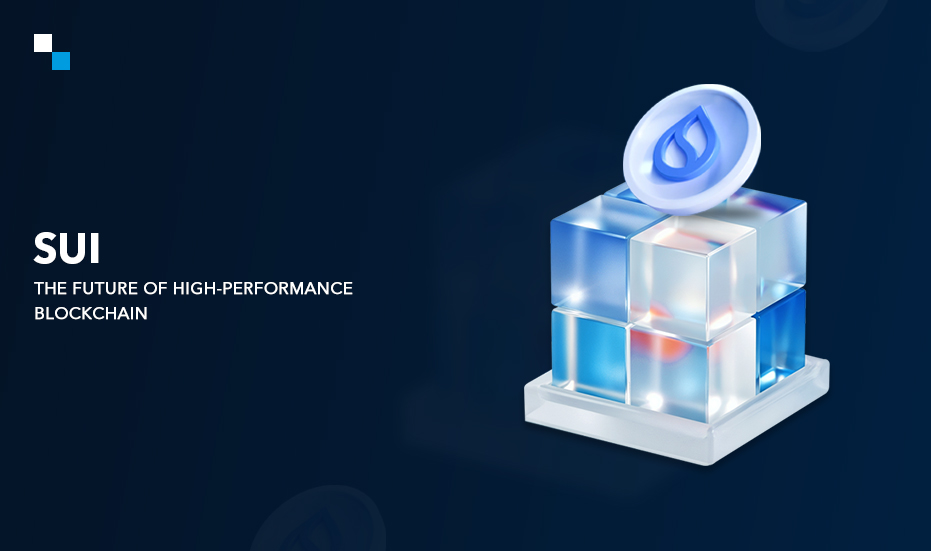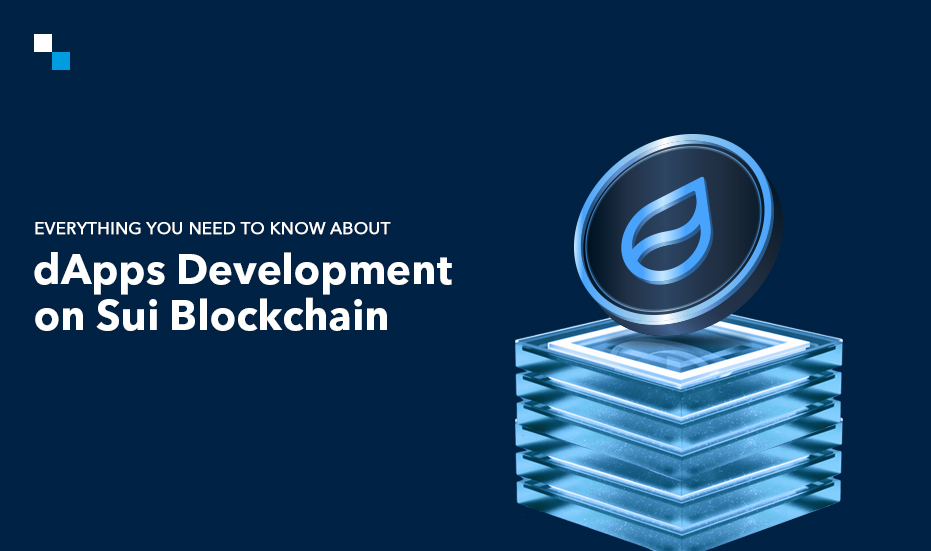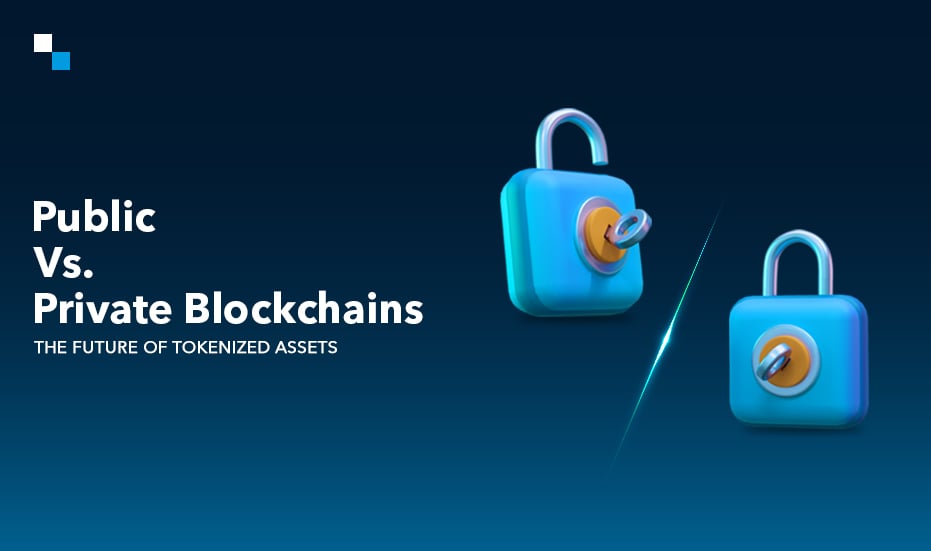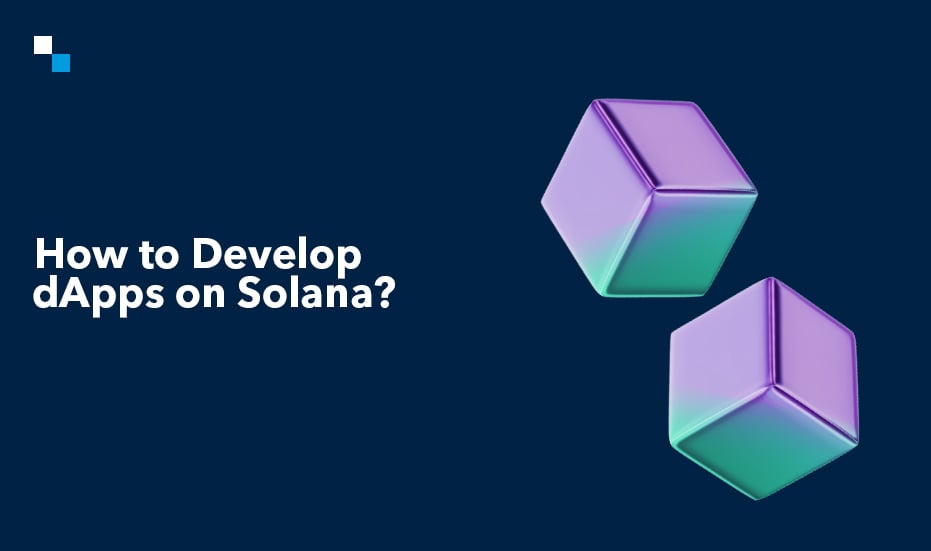
Credit Card Tokenization- Ensuring Zero Risk Transactions
November 25, 2024
A Detailed Guide: How to Create a High-Performance Crypto Wallet Inspired by Sui?
November 25, 2024In recent years, the blockchain space has witnessed rapid advancements in scalability, efficiency, and interoperability. As more decentralized applications (dApps) and smart contracts are developed, the demand for high-performance blockchains has increased significantly. One of the latest blockchain networks aiming to meet these demands is SUI—a high-performance layer-1 blockchain designed to offer speed, scalability, and developer-friendly tools.
Launched in May 2023, the Sui blockchain has rapidly evolved, growing from 1 million active accounts to over 18 million by September 2024. Along the way, it introduced groundbreaking features like zkLogin and surpassed $500 million in total value locked (TVL), cementing its position as a leader in the blockchain space.
SUI has garnered significant attention for its unique approach to blockchain architecture and consensus mechanisms. In this blog post, we’ll dive deep into the SUI blockchain, its features, innovations, and what makes it stand out in a crowded landscape of blockchain networks.
What is the SUI Blockchain?
SUI is a decentralized, permissionless, and high throughput blockchain network designed to provide fast, secure, and scalable transactions. Developed by Mysten Labs, a company founded by former Meta (Facebook) engineers, SUI leverages innovative technologies to optimize performance, particularly focusing on scalability and low-latency transactions.
The SUI network is designed to power decentralized applications, digital assets, and smart contracts while overcoming many of the limitations faced by earlier blockchains, such as Ethereum and Bitcoin, including slow transaction speeds and high gas fees.
SUI vs. Other Blockchain a Comparison
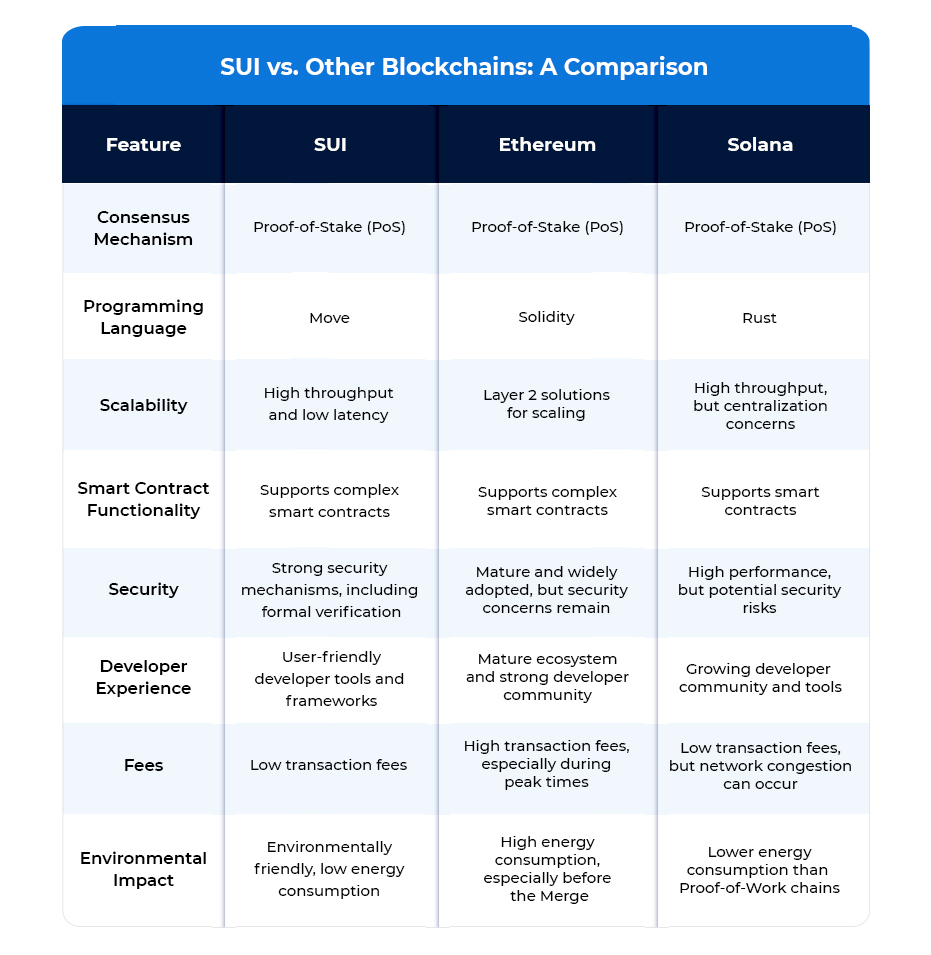
Key Features of SUI Blockchain
Object-Centric Data Model
Unlike traditional blockchains that store transactions in a linear fashion, SUI introduces an object-centric data model. It means that instead of tracking changes to a ledger in a block-by-block manner, SUI tracks individual objects (or data) directly.
In this model, assets are represented as objects, and each object can exist independently with its own state and history. It allows for parallel processing of transactions involving different objects, vastly improving throughput and scalability. This is a departure from the conventional account-based models seen in networks like Ethereum.
Parallel Execution with Move
SUI uses a unique programming language called Move, which was originally developed by Facebook’s Libra project (now Diem). Move is designed to be flexible, secure, and efficient for writing smart contracts. It allows developers to define complex rules around asset management and execution logic while reducing common risks like reentrancy attacks and smart contract vulnerabilities.
With the Move language, SUI achieves parallel transaction execution. This means that transactions can be processed simultaneously without causing conflicts, resulting in faster finality and lower latency.
By enabling parallel execution, SUI can scale to thousands of transactions per second (TPS), making it one of the most scalable blockchains currently in development.
Consensus Mechanism: Narwhal and Tusk
SUI employs a novel consensus mechanism called Narwhal and Tusk. This two-layer architecture is designed to improve the scalability of the network and ensure that transactions can be processed in parallel.
- Narwhal is responsible for data propagation and ordering, ensuring that data is efficiently distributed across nodes.
- Tusk is the consensus layer that determines the order of transactions and achieves finality. It helps to ensure that the network remains consistent and that transactions are validated in a decentralized and secure manner.
The design is highly efficient because it decouples data ordering from transaction execution. This separation of concerns allows for faster processing and higher throughput compared to traditional blockchains that combine these functions.
Scalability and Throughput
SUI is designed to achieve massive scalability without sacrificing decentralization. With the ability to execute thousands of transactions per second (TPS) through parallel execution, SUI’s performance is a significant leap forward in terms of blockchain throughput. Unlike other blockchains where the transaction speed slows down as more users join the network, SUI maintains high performance regardless of network congestion.
The object-centric model, combined with parallel transaction execution, minimizes bottlenecks and allows SUI to process a high volume of transactions simultaneously. This is critical for supporting applications with high user demand, such as gaming, decentralized finance (DeFi), and NFT platforms.
Low Latency and Instant Finality
One of the key innovations of the SUI blockchain is its ability to offer instant finality and low-latency transactions. In traditional blockchains, finality—the point at which a transaction is permanently confirmed—can take time, often leading to delays and increased costs.
SUI’s consensus mechanism ensures that once a transaction is processed, it is immediately final. This eliminates the need for multiple confirmations, allowing users to transact in real-time without the typical wait times.
Developer-Friendly Environment
SUI places a strong emphasis on being developer-friendly, offering tools and infrastructure to simplify the creation of dApps and smart contracts. The Move programming language, in combination with SUI’s rich SDK (Software Development Kit), provides a solid foundation for developers to build high-performance decentralized applications.
In addition, SUI’s robust API layer and modular design allow developers to easily integrate with other systems, such as decentralized storage networks or oracles. This makes SUI an attractive platform for building a wide range of decentralized solutions, from gaming platforms to DeFi protocols.

Advantages of the SUI Blockchain
- High Throughput: SUI’s object-centric architecture and parallel transaction execution allow it to handle a large number of transactions per second (TPS), potentially reaching tens of thousands of TPS.
- Low Transaction Costs: Due to its high efficiency, SUI can keep transaction fees low even during periods of high demand.
- Scalability: SUI is designed to scale with increasing network size, enabling it to handle the growing demands of dApps and decentralized services without congestion or slowdowns.
- Developer Ecosystem: With tools like the Move language and a rich SDK, developers can create secure and scalable applications with ease.
- Instant Finality: Transactions on the SUI blockchain are confirmed instantly, which is crucial for use cases that require fast transaction processing, such as gaming and finance.
Use Cases for SUI Blockchain
Given its scalability and performance, SUI is well-suited for a wide range of use cases, including:
- Decentralized Finance (DeFi): SUI’s ability to handle a large number of transactions makes it ideal for DeFi applications, such as decentralized exchanges (DEXs), lending platforms, and liquidity pools.
- Gaming and NFTs: The blockchain’s high throughput and low-latency features make it a perfect fit for blockchain-based games and NFTs, where large numbers of in-game transactions need to be processed quickly.
- Supply Chain Management: SUI can provide transparent and immutable records of transactions, enabling decentralized supply chain solutions with real-time tracking.
- Digital Identity and Authentication: With its secure and scalable architecture, SUI can be used to build decentralized identity management systems, giving users control over their personal data.
Top Projects on SUI Blockchain
SUI’s vibrant ecosystem is home to a variety of innovative projects:
DeFi:
- DeepBook: A decentralized exchange (DEX) that offers fast and efficient trading, leveraging SUI’s high throughput and low latency.
- Cetus Protocol (CETUS): Another DEX that provides a user-friendly interface and advanced trading features.
Launchpad:
- SuiPad (SUIP): A platform for launching new projects on the SUI blockchain, offering fair token distribution and community engagement.
Stablecoin:
- Ondo US Dollar Yield (USDY): A stablecoin pegged to the US dollar, providing a reliable and stable store of value on the SUI network.
DePin:
- Chirp: A decentralized social media platform built on SUI, empowering users to create and share content without censorship.
Oracle:
- Supra: A decentralized oracle network that provides real-world data to smart contracts on the SUI blockchain.
Conclusion
The SUI blockchain represents a bold step forward in the blockchain ecosystem. With its innovative architecture, high scalability, and developer-friendly tools, SUI is positioned to become a key player in powering decentralized applications and services. By addressing the performance limitations of existing blockchains, SUI is offering a compelling alternative for developers and users seeking faster, more efficient decentralized networks.
As the ecosystem around SUI continues to grow, it will be exciting to see how it transforms industries like DeFi, gaming, and digital identity management. With its cutting-edge technology and focus on scalability, SUI is poised to make a significant impact on the blockchain space in the years to come.
Stay tuned as SUI continues to evolve and disrupt the world of blockchain technology!
